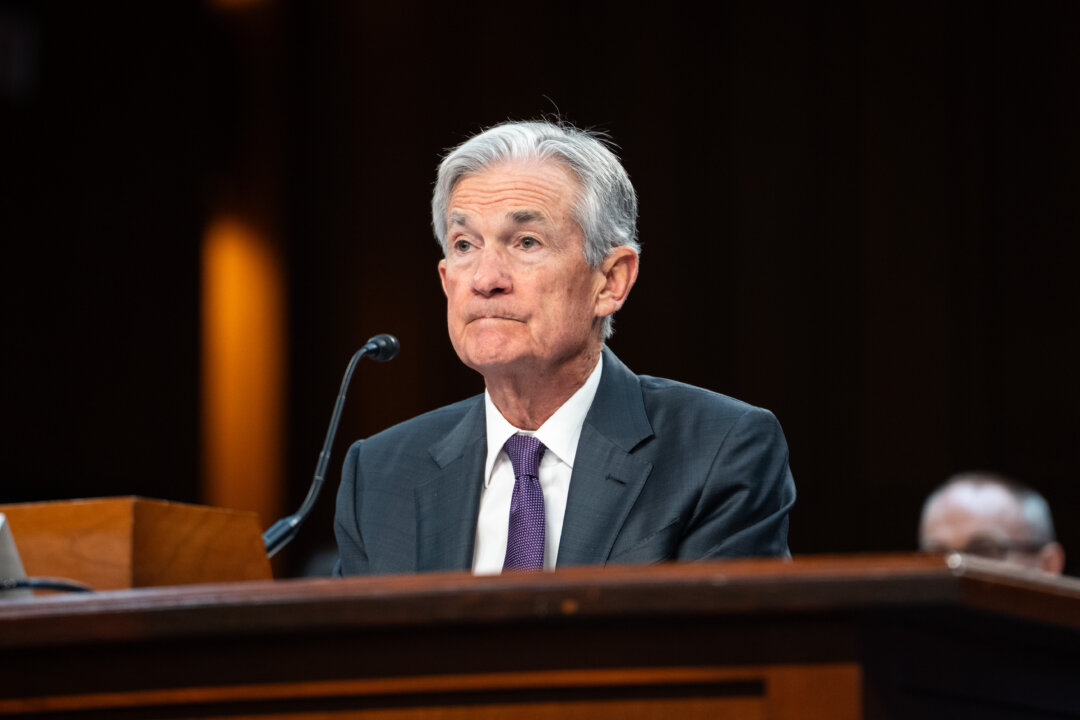With inflation no longer at the peak seen during Biden’s presidency, Trump has ramped up pressure on the Fed chair to lower rates.
Federal Reserve Chair Jerome Powell told lawmakers on Capitol Hill on Wednesday that the president’s calls for lower interest rates will not influence the central bank’s decisions, reiterating that Fed policymakers remain committed to following a data-dependent path on monetary policy.
“People can be confident that we’ll continue to keep our heads down, do our work, and make our decisions based on what’s happening in the economy,” Powell said on Feb. 12, the second day of his semiannual testimony to Congress.
Powell’s remarks came shortly after President Donald Trump took to social media to say, “Interest Rates should be lowered, something which would go hand in hand with upcoming Tariffs!!!”
The exchange highlights the recurring friction between U.S. presidents and Federal Reserve chiefs. Historically, presidents have favored lower interest rates, which can boost economic growth and, by extension, their political standing. In contrast, Fed policymakers prioritize inflation control, often resisting political pressure to lower rates in the name of ensuring price stability. Powell and his central bank colleagues have repeatedly underscored the Fed’s independence, arguing that shielding monetary policy from political influence is critical to preventing financial instability.
Trump, who appointed Powell as Fed chair in 2018, later clashed with him in 2019 when the central bank refused to cut rates. At the time, Trump lambasted the decision, calling it unnecessary given low inflation and citing other countries’ lower rates as putting the United States at an economic disadvantage.
On the campaign trail, Trump argued that presidents should have more influence over the Fed’s decisions, claiming he had “better instincts” on monetary policy than Powell or other central bank officials.
As the 2024 election approached, Trump accused Powell of acting politically when the Fed signaled plans to cut rates in September. Trump suggested the move was designed to help then-President Joe Biden’s reelection chances. The Fed ultimately delivered the rate cut, though Powell insisted the decision was based on inflation trends and a shifting risk balance—not politics.
Now back in office, Trump has once again set his sights on monetary policy. With inflation no longer at the 9 percent peak seen during Biden’s presidency, Trump has ramped up pressure on Powell to lower rates, while also accusing the Fed of mismanaging inflation.
In a recent social media post, Trump blamed the central bank for prioritizing issues such as diversity, equity, and inclusion (DEI) and climate policies over its core mandate.
“If the Fed had spent less time on DEI, gender ideology, ‘green’ energy, and fake climate change, Inflation would never have been a problem,” Trump wrote after the Fed opted to keep rates steady at its January meeting. The remarks align with his administration’s broader efforts to dismantle Biden-era DEI initiatives and climate policies.
Powell defended the Fed’s January decision, citing ongoing concerns about inflation. While price pressures have eased from their 2022 peak, certain categories remain stubbornly high.
Fresh inflation data released on Feb. 12 showed consumer prices rising 3 percent year-over-year in January, the highest since June 2024. Core inflation—a measure closely watched by the Fed—advanced to 3.3 percent.
“Houston, we have a problem,” Chris Zaccarelli, chief investment officer at Northlight Asset Management, said in an emailed statement to The Epoch Times.
“The increase in inflation metrics completely takes away the ability of the Fed to cut rates, and although it’s too early to predict that they will begin raising rates any time soon, the market is going to start seriously considering that the next move the Fed makes—even if it is in late 2025 or early 2026—is going to be a hike and not a cut.”
Analysts at ING, however, maintained their forecast for a 25-basis-point rate cut in September. They pointed to falling housing costs, which they believe will ease inflation pressures by late summer and strengthen the case for easing monetary policy.
“Potential tariffs add upside risk to inflation in coming quarters, but there are some encouraging signs that housing costs will slow meaningfully later in 2025 and keep the door open to the second half of the year cuts we are forecasting,” they wrote.
During Powell’s first day of congressional testimony earlier this week, he said that upside inflation risks remain and that the U.S. economy is “strong overall” while the labor market remains solid, adding that the Fed does not “need to be in a hurry” to cut rates.
Andrew Moran contributed to this report.

